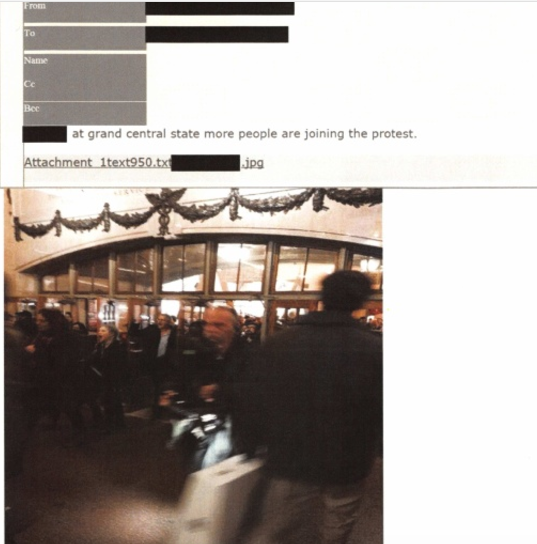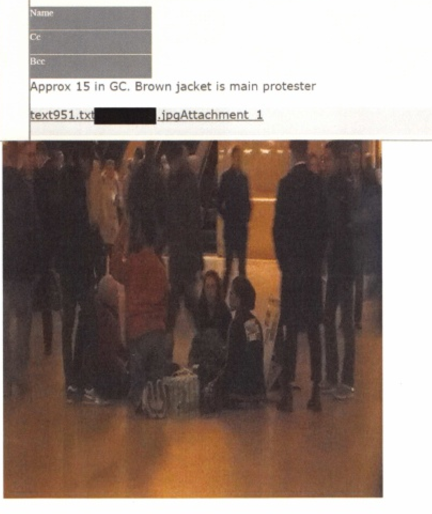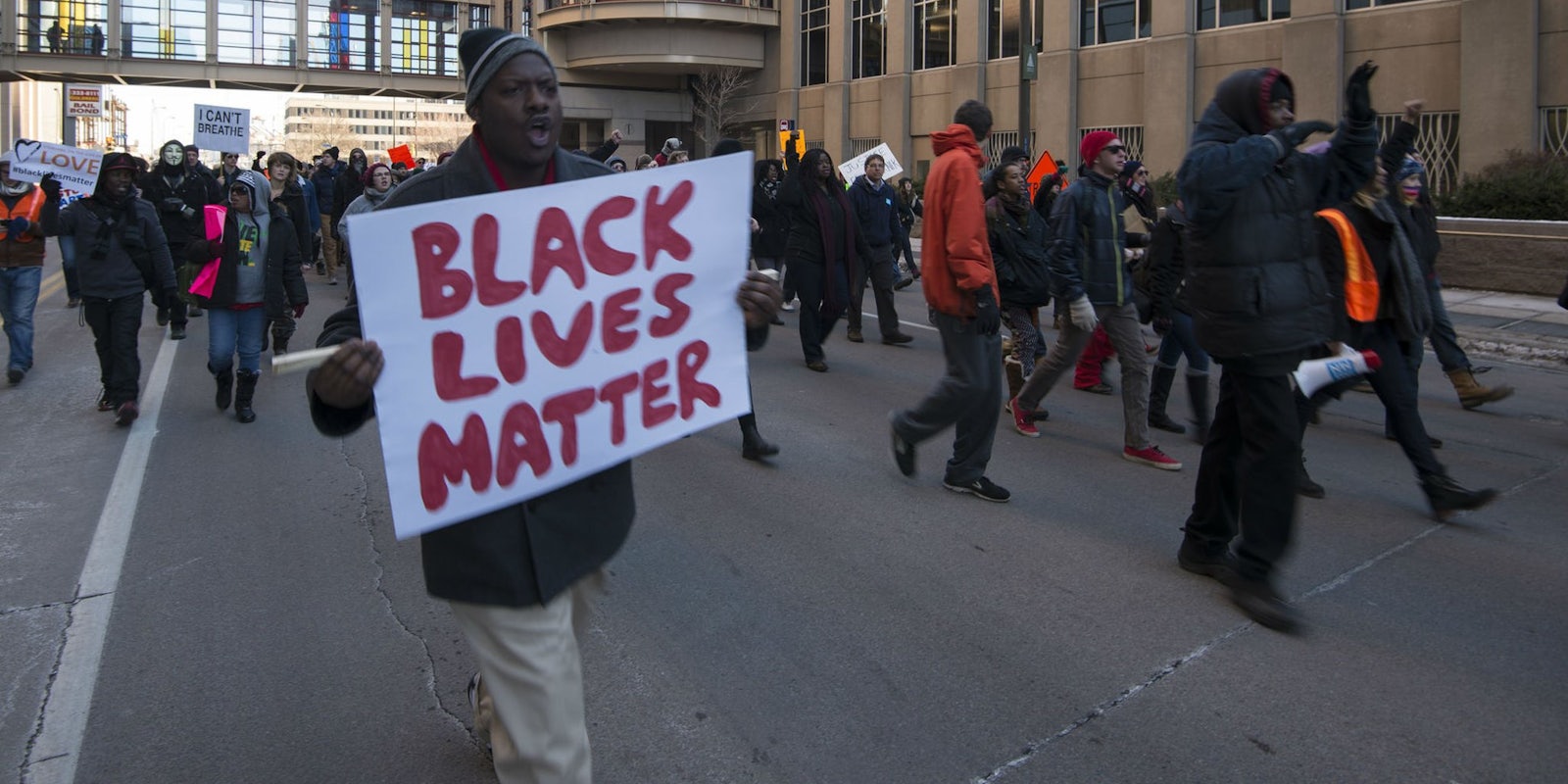Newly released documents reveal that undercover NYPD officers infiltrated Black Lives Matter groups, getting their hands on some very private text threads meant to be shared only with activist organizers.
Obtained by the Guardian, the documents are mostly emails that show how undercover officers would pose as protesters and relay location updates in the protests that happened in the wake of Eric Garner‘s death in 2014 and 2015.

One email instructs undercover officers to listen in to protesters and find out how and when they planned to leave a die-in protest at Grand Central Station. Others highlight the whereabouts of incoming BLM groups and give physical descriptions of individual protesters.

The emails also contain photos of protesters on the ground and designated specific individuals as the “main protesters,” detailing their movements.
“That text loop was definitely just for organizers, I don’t know how that got out,” Elsa Waithe, a Black Lives Matter organizer told the Guardian. “Someone had to have told someone how to get on it, probably trusting someone they had seen a few times in good faith. We clearly compromised ourselves.”
Though the documents do reveal the extent to which NYPD officers were able to embed themselves within intimate BLM circles, it’s not clear whether or not the emails contain anything that raises legal issues, according to the Guardian. Most of the information obtained isn’t incredibly noteworthy, aside from the photos of text messages between organizers.
NYPD’s official intelligence-gathering rules, called the Handschu Guidelines, hold that prior to beginning a formal investigation, the NYPD is authorized to search for “preliminary leads” and conduct investigative work like the “checking of leads” if there is a suspicion of illegal activity. A First Amendment investigation, according to these guidelines, can begin when “circumstances reasonably indicate that an unlawful act has been, is being, or will be committed.”
The emails do not provide much evidence of any significant unlawful acts—in all of the documents collected, only one arrest is mentioned. Protesters are described several times as “peaceful.”
“It doesn’t appear that there was any criminal behavior they were talking about in the emails,” Michael Price, legal counsel at the Brennan Center for Justice, told the Guardian. “Most references are to protesters being peaceful, so I would be very concerned if they were hinging their whole investigation on civil disobedience, such as unpermitted protests or blocking of pedestrians.”
H/T the Guardian


